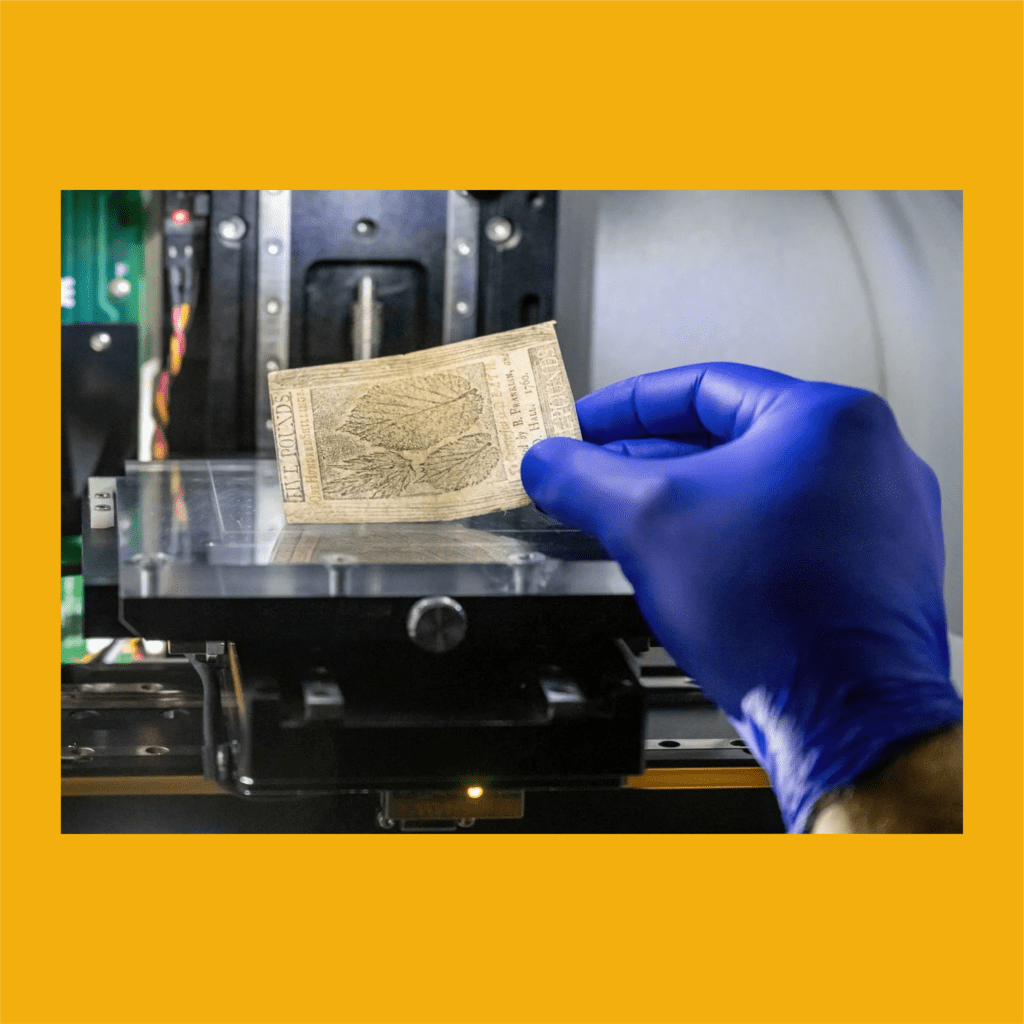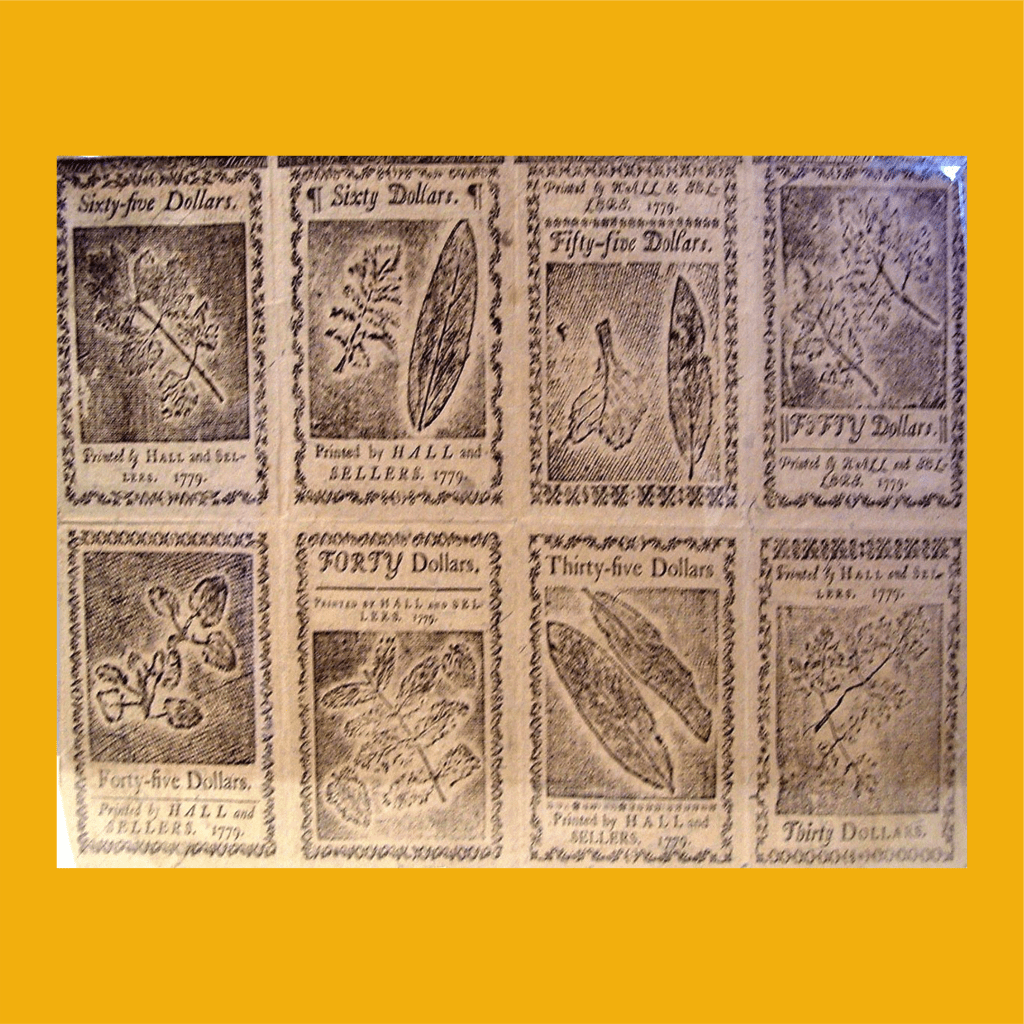Banknotes created by Benjamin Franklin from lead matrices printed from a mold of tree leaves. The process was developed to prevent counterfeiting. Horst Bredekamp speaks about Franklin’s banknotes in his book Teoria do Acto Icónico:
“These banknotes that […] guaranteed greater resistance to counterfeiting, allowed for the first time a widespread and reliable circulation of money on a large scale, and the development of a certain degree of trust in the financial system. Since the banknote became the monetary form of the true icon, it developed and unfolded its own power. Banknotes, with their authenticity, strengthened the political consciousness of the American colonies, as they derived their communal consciousness from the peculiarity of the surrounding natural environment. The natural engravings on banknotes played a crucial role in shaping national identity until 1776, the year of independence declaration. These leaves, transformed into images, reproduced in very high quantities and widely circulated, became the “true images” of America.”
The idea of a “true image,” obtained through the direct printing of a natural object, also serves as the basis for the initial, perhaps counterintuitive idea, that photography would be something produced by nature – see FoX Talbot’s “The Pencil of Nature,” as noted by Nathan Jurgenson in “The Social Photo.”
The mechanical nature of photography and its natural character did not contradict each other. As Bruno Latour reminds us, the advent of modern science consisted in the creation of complex apparatuses whose paradoxical function was to allow laboratory access to nature, otherwise invisible or unrecordable.
Translated by ChatGPT and manually revised.





Leave a comment